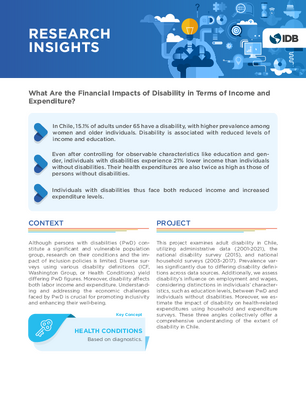Research Insights: What Are the Financial Impacts of Disability in Terms of Income and Expenditure?
Date
Nov 2023
In Chile, 15.1% of adults under 65 have a disability, with higher prevalence among women and older individuals. Disability is associated with reduced levels of income and education. Even after controlling for observable characteristics like education and gender, individuals with disabilities experience 21% lower income than individuals without disabilities. Their health expenditures are also twice as high as those of persons without disabilities. Individuals with disabilities thus face both reduced income and increased expenditure levels.




